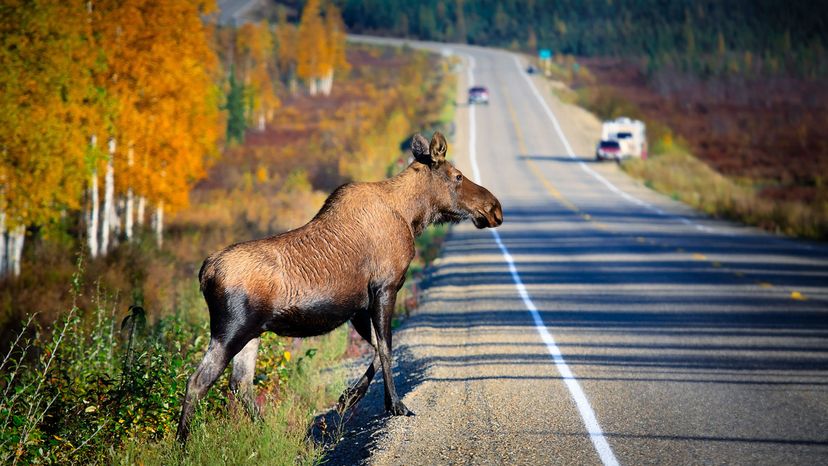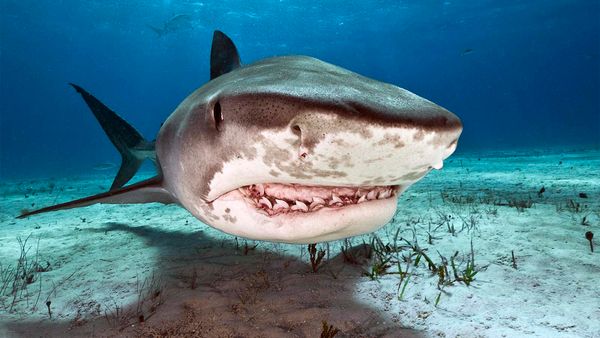To avoid moose attacks, don't throw anything at them, and keep dogs away. Don't feed moose, even from a distance.
If a cow moose or bull moose charges at you, run to avoid getting trampled. Hide behind the nearest tree, building or car if you don't have time to get inside. Although moose can outrun humans at their top speeds, many times, they won't chase you far if you can run away to a safe distance.
If you don't get away fast enough, and a moose knocks you down, don't struggle. Curl into the fetal position and cover your head with your arms. Trying to move or beat it off will only cause the moose to continue kicking and stomping you.
If you see one that isn't approaching, your best bet is to avoid it and allow it to move out of your way. However, if you notice its hairs raised, head down and ears back, that's your cue to hightail it in the opposite direction.

